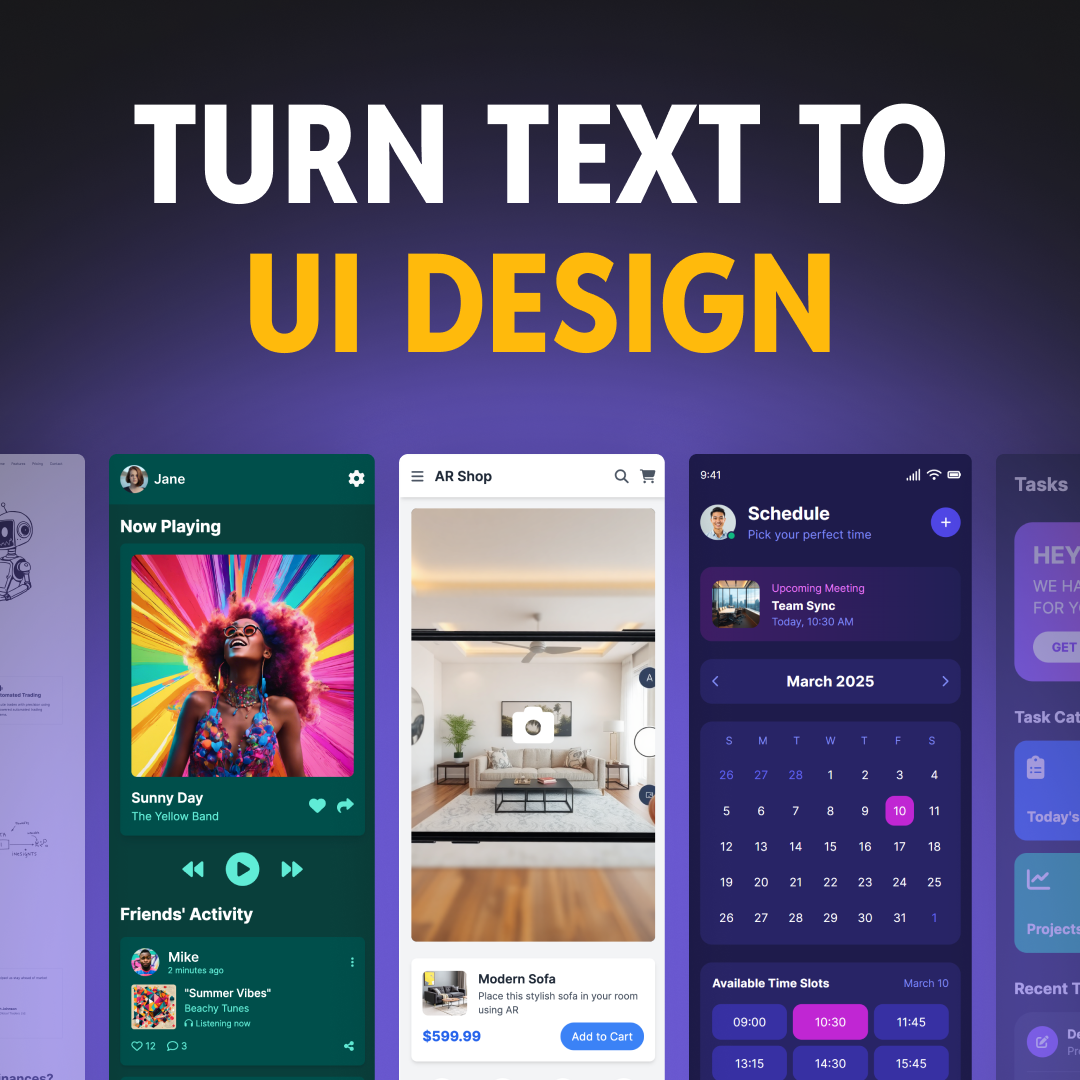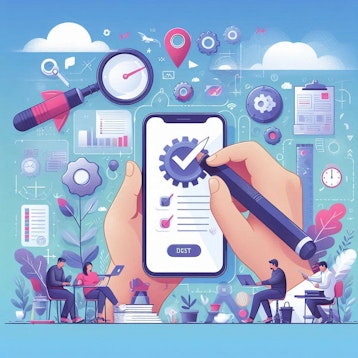In an era where user testing is pivotal, businesses worldwide are turning to specialized service providers to refine their digital products. This article, titled "Top User Testing Service Providers," highlights the leading firms dedicated to ensuring product functionality and user satisfaction.
These companies have established themselves as benchmarks in user testing, offering services ranging from specific industry focuses to comprehensive user testing solutions.
Adam Fard Studio
Adam Fard Studio is renowned for its user-centric testing methodologies, particularly in the FinTech and SaaS sectors. They expertly integrate user feedback with business objectives, targeting crucial metrics like usability and user retention.
💲 Pricing Model: $49 to $100 per hour
👥 Team Dynamics: 10 to 49 specialists
🧠 Specialization: FinTech, SaaS, complex enterprise applications, user testing for app integrations
🎯 Target Clients: Startups, large-scale enterprise projects
Visit Adam Fard Studio Website
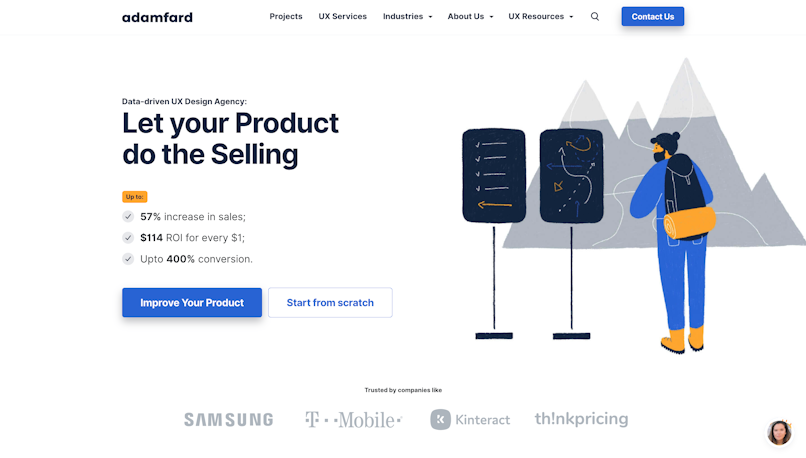
Nielsen Norman Group
Famed for their user testing methodologies, Nielsen Norman Group offers extensive user testing reports and professional training workshops, ensuring cutting-edge user experience research.
🌍 Presence: United States
👥 Team Size: 10-49 experts
💲 Service Costs: Vary based on testing complexity, starting from $38K
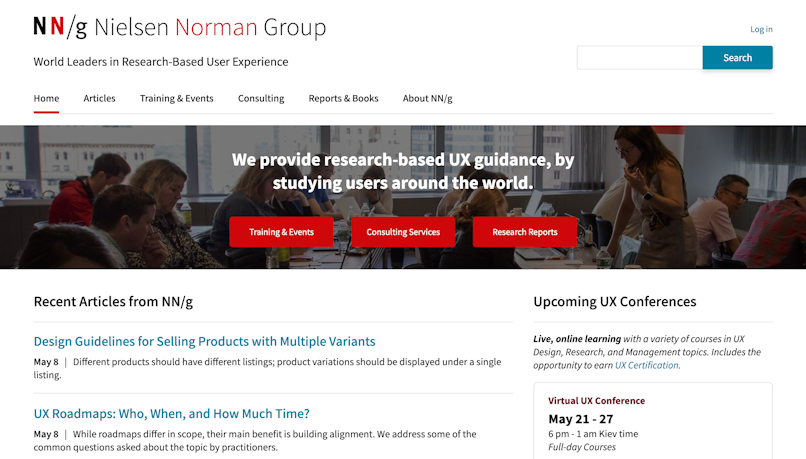
Momentum Labs
Momentum Labs excels in enhancing customer experiences in various industries, using thorough user testing to innovate in AI, IoT, Analytics, Blockchain, and Cloud Applications.
💰 Rate Spectrum: $150 - $199/hr
🌐 Global Footprint: New York, London, Belgrade, San Mateo
🚀 Core Expertise: digital media, cryptocurrency, wellness user testing

Blink UX
With over two decades of experience, Blink specializes in user testing for digital product design, serving clients like Microsoft, Amazon, and Starbucks.
🌎 Location: United States
👥 Team Capacity: 51-200 professionals
💲 Pricing: Projects start at $25,000; Hourly rate: $200 - $300
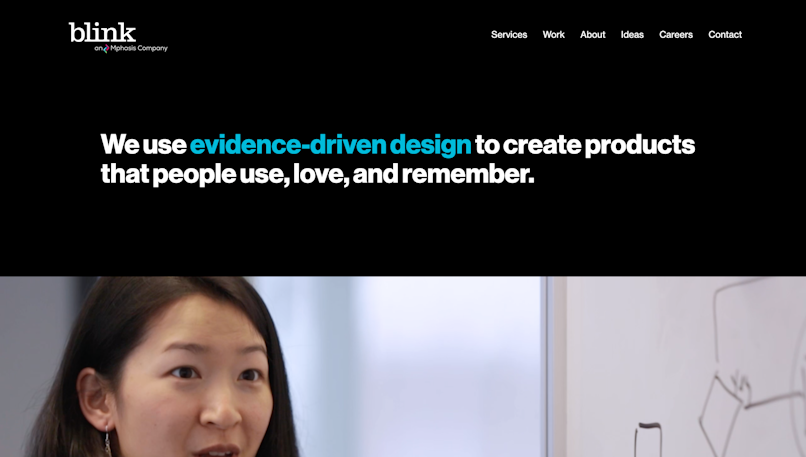
Gartner
Gartner offers a broad range of services, including user testing, across various industries, backed by extensive business insights.
🌍 Global Presence: United States
👥 Organization Scale: 10,000-20,000 employees
💲 Investment: User Testing projects from $30,000
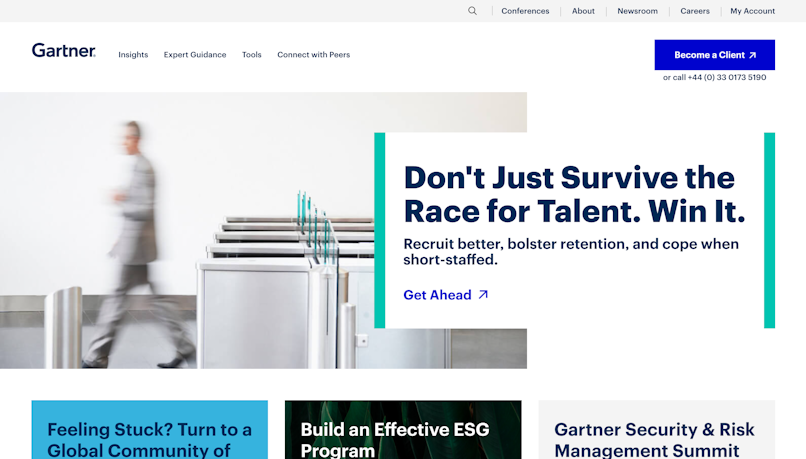
Lickability
Based in New York City, Lickability specializes in designing and developing iOS apps, combining UX research and strategy with design and development for clients like The Atlantic and Meetup.
💰 Minimum Project Size: $25,000+
💲 Hourly Rate: $200 - $300/hr
👥 Employees: 2 - 9
🧙🏻♂️ Industry Knowledge: news & media, healthcare, social media
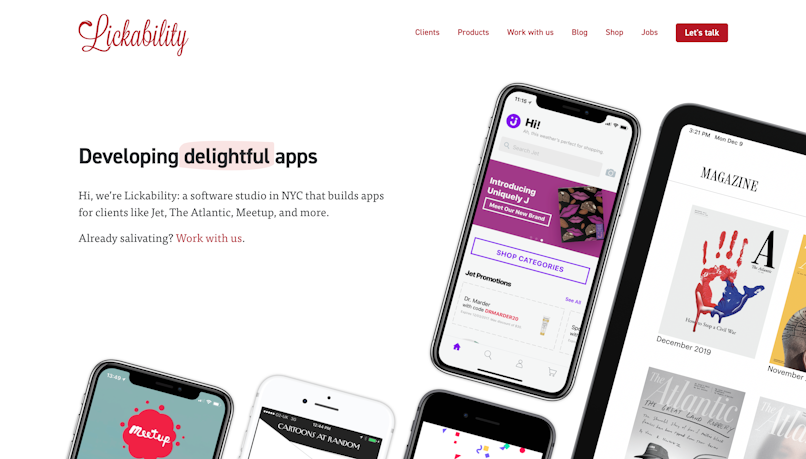
Tapptitude
Tapptitude is adept at creating mobile apps for a wide range of sectors, offering comprehensive services including UX research, design, and development for clients in social media, wellness, and real estate.
💰 Minimum Project Size: $50,000+
💲 Hourly Rate: $50 - $99/hr
👥 Employees: 50 - 249
🧙🏻♂️ Industry Knowledge: social media, wellness, hospitality, IoT, real estate
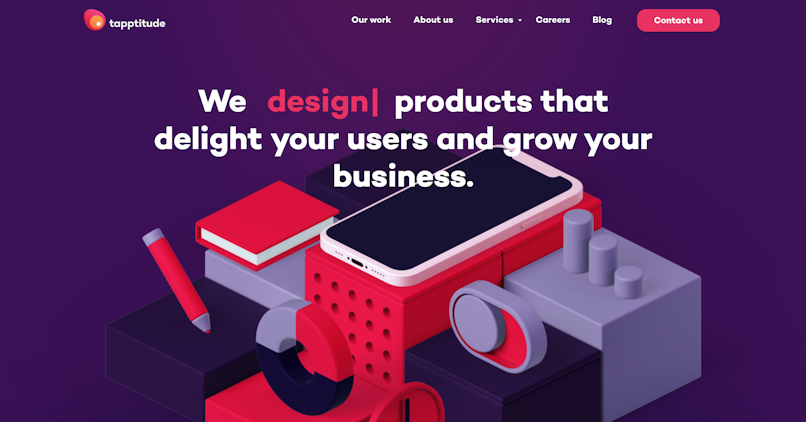
Conclusion
In conclusion, these firms demonstrate remarkable expertise in user testing, contributing significantly to the development of user-focused digital products. From specialized services in specific sectors to broad-based user testing strategies, each entity provides invaluable insights and solutions, shaping the future of digital user interactions in a rapidly evolving digital landscape.
Common Questions We Get Asked
How much does professional user testing cost for a startup?
Professional user testing costs for a startup can vary widely based on the scope and complexity of the project. Typically, prices range from $4,900 to $30,000. Factors influencing cost include the number of users tested, the types of tests conducted, and the duration of the testing period.
It’s advisable for startups to get detailed quotes from several user testing companies to understand the specific costs involved and ensure they are getting the best value for their budget.
What are the best user testing companies for fintech applications?
For fintech applications, it's crucial to choose user testing companies with specific expertise in the financial sector. Some top companies include:
Adam Fard Studio: Specializes in complex FinTech user experiences and deliver results for startup. Book a free consultation with Adam Fard
Nielsen Norman Group: Pioneered many of the UX research methods which have now become the standard best practices.
PlaybookUX: Offers detailed insights and analytics tailored for fintech products.
Testlio: Provides in-depth testing services with a strong focus on security and compliance.
These companies offer tailored solutions to meet the stringent requirements and unique challenges of fintech applications.
Which user testing services offer remote testing options?
Many user testing services offer remote testing options to accommodate clients globally. Notable ones include UserTesting, which provides extensive remote testing with video feedback, and Lookback, which enables live remote user interviews and usability tests. Userlytics offers remote usability testing with customizable environments, while TryMyUI provides detailed video sessions and analytics.
Remote testing allows businesses to gather diverse user feedback efficiently without geographic constraints, making it easier to understand and improve user experiences across different regions.
How to choose a user testing company for enterprise-level projects?
Choosing a user testing company for enterprise-level projects involves several key considerations:
Expertise: Ensure the company has experience with large-scale projects and understands enterprise needs.
Portfolio: Review their past projects to assess their capability to handle complex requirements.
Security: Check their data security measures, as enterprise projects often involve sensitive information.
Scalability: Ensure they can scale their services to meet the demands of your project.
Client Testimonials: Look for reviews and case studies from other enterprise clients.
A thorough evaluation of these factors will help you select a reliable partner for your enterprise needs.
What are the top user testing firms specializing in mobile app development?
Top user testing firms specializing in mobile app development include Applause, which offers comprehensive mobile testing services with real-world insights, and Testlio, known for its deep expertise in mobile app usability and performance testing. Perfecto provides both automated and manual mobile testing solutions, while UserTesting delivers extensive mobile user feedback with video insights.
These firms are equipped to handle the unique challenges of mobile app development, ensuring high-quality user experiences by leveraging advanced testing methodologies and real-world user feedback.
How do user testing companies integrate AI and machine learning in their services?
User testing companies integrate AI and machine learning in various ways:
Automated Testing: Using AI to automate repetitive testing tasks, improving efficiency.
Predictive Analytics: Leveraging machine learning to predict user behavior and identify potential issues.
Personalized Testing: AI-driven tools can customize tests based on user profiles and behaviors.
Sentiment Analysis: Analyzing user feedback with AI to gauge sentiment and emotional responses.
These technologies enhance the accuracy and depth of user testing, providing more actionable insights.
What are the most affordable user testing solutions for small businesses?
Affordable user testing solutions for small businesses include TryMyUI, which offers budget-friendly plans with comprehensive testing features, and UsabilityHub (Now Lyssna), providing cost-effective options with various user testing tools. Userfeel is known for its affordable pricing and quality feedback, while Loop11 offers flexible pricing plans suitable for small businesses.
These platforms deliver valuable user insights without straining the budget, making them ideal for small businesses seeking to improve their user experience efficiently and economically.
Which user testing providers offer industry-specific expertise for healthcare products?
Providers offering industry-specific expertise for healthcare products include Validately, which specializes in user testing for regulated industries like healthcare, and UserTesting, which provides tailored solutions for healthcare applications. Testlio is known for its in-depth testing in the healthcare sector, focusing on usability and compliance, while UsabilityHub (Now Lyssna) offers customizable testing environments suited for healthcare products.
These providers understand the unique requirements and regulatory considerations of healthcare products, ensuring thorough and compliant user testing tailored to the healthcare industry’s specific needs.
How to compare pricing models of different user testing companies?
To compare pricing models of different user testing companies, there are 5 factors to examine:
Service Inclusions: Check what exact services are included in each pricing tier.
User Numbers: Consider the number of users tested and the comprehensiveness of the feedback.
Testing Methods: Evaluate the types of testing offered (e.g., remote, in-person, A/B testing).
Duration: Look at the duration of the testing period included in the price.
Customization: Assess the level of customization available for the testing services.
A detailed comparison of these factors will help you find the best value for your investment.
What are the benefits of hiring a user testing company vs. conducting in-house tests?
Hiring a user testing company offers several benefits over conducting in-house tests. Professional firms bring specialized knowledge and experience, providing expertise that may not be available internally.
External testers offer unbiased feedback, enhancing objectivity. Outsourcing user testing saves time and resources, allowing your team to focus on core tasks while the testing company scales services to meet your project needs and provides access to advanced testing tools and methodologies.
These advantages make hiring a professional user testing company a wise investment for thorough and effective user testing, ensuring higher quality results and more actionable insights.
How do top user testing companies ensure data privacy and security?
Top user testing companies ensure data privacy and security by implementing strict measures such as:
Data Encryption: Protecting data with advanced encryption methods.
Compliance: Adhering to industry standards and regulations like GDPR and HIPAA.
Access Controls: Restricting data access to authorized personnel only.
Secure Servers: Hosting data on secure, protected servers.
These practices ensure that your data remains safe and confidential throughout the testing process.
Case Study: Th!nkPricing
When Th!nkPricing approached us, they needed a design partner to help their AI-powered pricing platform feel intuitive and trustworthy.
We collaborated closely with their team to tackle the unique challenges of pricing analytics, like building user confidence in AI and setting realistic expectations for the app's capabilities.
Through workshops, prototyping, and usability testing, we shaped a design that not only met user needs but also reflected Th!nkPricing’s vision.
The result? A polished, coding-ready app that delivers a seamless, engaging experience and positions the platform for long-term growth.
Key Outcomes:
Boosted user trust in AI-driven pricing recommendations.
Improved user retention, enabling Th!nkPricing to scale confidently and invest in growth.
Delivered a coding-ready web app built with React components.
Created a thoughtful, AI-centered UX design process that aligned stakeholders and users.
Refined the brand aesthetic with style guides, accent colors, and playful design elements.
Testimonial:
"The final UX design meets all our requirements and looks great. The team is efficient and to the point, impressively able to understand design needs and integrate feedback."
— Sebastian Thobe, CTO of Th!nkPricing
Case Study: EcommerceTech
EcommerceTech approached us with the challenge of creating an MVP to help users better manage their ecommerce tools and discover new ones. Our user testing played a pivotal role in shaping the product.
Through usability testing, user interviews, and workflow analysis, we identified critical gaps in the initial assumptions and refined the design to meet user needs. Features like the Tool Library and Shortlist function were validated and optimized through iterative testing to ensure they provided real value.
Despite challenges like tight timelines and shifting priorities, our user-centered approach enabled us to deliver an MVP that truly resonates with EcommerceTech’s target audience.
Key Outcomes:
Conducted extensive user testing to validate and refine key platform features, including the Tool Library and Shortlist functionality.
Identified and addressed mismatches between client assumptions and actual user needs through research and persona development.
Improved user workflows by analyzing and testing onboarding, dashboard, and tool comparison features.
Used iterative testing cycles to ensure design decisions aligned with real-world user behavior.
Delivered a coding-ready MVP backed by validated insights from usability testing and user feedback.
Emerging Trends in User Testing
Let’s talk about where user testing is heading—because it’s not just about finding bugs anymore. The field is evolving fast, thanks to new tools and techniques that help us understand users on a deeper level. Here are some trends you should keep an eye on:
1. AI-Powered User Testing
AI research tools are making user testing faster and smarter. Imagine running a test and having AI instantly flag usability issues or predict how users might navigate your app before it’s even launched. It’s like having a supercharged assistant that crunches the numbers and serves up insights, so you can focus on making better design decisions.
2. Empathy Mapping: Understanding the ‘Why’
Here’s the thing: raw data can tell you what users are doing, but empathy mapping digs into why they’re doing it. It’s all about stepping into your users’ shoes to understand their emotions, motivations, and pain points. Think of it as adding a human touch to your design process—it’s what helps you create products that people really connect with.
3. Behavioral Analytics Meet User Testing
Ever wondered how people really use your product over time? That’s where behavioral analytics come in. These tools track patterns—like where users drop off or which features they love most—and pair beautifully with traditional user testing. Together, they give you a full picture of how people interact with your product, helping you spot opportunities for improvement.
4. Remote Testing Gets a Makeover
Remote testing has been around for a while, but it’s leveling up. Today, you can do live user interviews, analyze facial expressions, and even track tone of voice—all from a distance. It’s like having a front-row seat to your users’ experiences without needing them in the same room.
5. Designing for Everyone: Accessibility Takes Center Stage
Accessibility isn’t just a nice-to-have anymore; it’s a must. More companies are prioritizing testing for users with disabilities, ensuring products meet global standards like WCAG. But it’s more than compliance—it’s about making sure everyone feels included when using your product.
In summary, user testing is becoming more dynamic and insightful, thanks to these trends. If you’re building something, now’s the time to embrace these changes. Not only will they help you create better products, but they’ll also make your users feel heard, valued, and—most importantly—understood.
DIY Testing Platforms
Let’s face it—not every project has the budget (or the need) for a full-service user testing firm. That’s where DIY testing platforms like UserTesting and Lookback come into play. These platforms let you run your own tests, gather insights, and iterate quickly—all without hiring an external agency.
What Makes DIY Platforms Different?
Unlike full-service firms, which often handle everything from recruiting participants to delivering polished reports, DIY platforms put the power in your hands. You can:
Choose your target audience.
Create custom tests tailored to your needs.
Access results in real time, often with video recordings of participants interacting with your product.
This hands-on approach makes them ideal for teams that want to stay closely involved in the research process.
When Are DIY Platforms a Good Fit?
For startups and small businesses, DIY platforms can be a game-changer. If you’re working with a lean budget or testing a new idea before committing to a full-scale launch, these tools offer a cost-effective way to validate your product. Plus, they’re great for quick iterations—when you need feedback yesterday, platforms like UserTesting or Lookback can deliver it in hours.
Keep in Mind
While DIY platforms are affordable and flexible, they do require some time and effort on your part. You’ll need to design the tests, recruit participants (if not using their pool), and analyze the results. For more complex projects or when in-depth expertise is needed, full-service firms like Adam Fard Studio might still be the better option.
That said, DIY testing platforms are all about accessibility and speed, making them a fantastic choice for startups looking to optimize on the fly. If you’re not ready for a full-service firm, they’re a practical first step to ensure your product resonates with users.
Integration with Product Development Tools
Ever wonder how user testing fits seamlessly into modern product development workflows? The best firms don’t just provide insights—they integrate directly with the tools your team already uses, like Figma, Miro, and Jira, to supercharge efficiency.
Why Integration Matters
Gone are the days when user testing results sat in a PDF, collecting digital dust. Today, firms streamline the process by embedding insights into their existing workflow, ensuring faster action on feedback. Here’s how:
Figma: Design teams can view usability feedback directly on their prototypes, making updates in real-time.
Miro: Visualize user insights and empathy maps in collaborative boards, helping teams align on key takeaways.
Jira: Translate testing results into actionable tasks for developers, ensuring nothing falls through the cracks.
Efficiency in Iterative Design
These integrations bridge the gap between design, research, and development. For example:
A user testing session uncovers navigation issues in your app.
Feedback is mapped in Miro, highlighting pain points.
Design tweaks are made in Figma, with annotated insights directly linked to the design elements.
Jira tickets are auto-generated for development, ensuring quick fixes and tracking.
This cycle repeats seamlessly, creating a feedback loop that’s not just efficient but also deeply collaborative.
What’s the Payoff?
By integrating user testing into tools you already know and love, firms help teams:
Save time by eliminating manual data transfers.
Ensure alignment across teams with centralized insights.
Act faster on user feedback, speeding up the time-to-market for improvements.
When user testing firms sync with platforms like Figma, Miro, and Jira, they become more than service providers—they become partners in your product’s success. It’s this synergy that makes iterative design truly shine.
Long-Term Partnerships for Continuous Improvement
User testing isn’t a one-and-done deal—especially for products that evolve after launch. That’s where long-term partnerships with testing firms come in, offering ongoing support for iterative development and ensuring your product keeps pace with changing user needs.
Why Long-Term Collaborations Matter
For dynamic products like SaaS platforms, mobile apps, or AI-driven tools, user expectations shift rapidly. A long-term partnership with a user testing company provides:
Consistent Feedback Loops: Regular testing ensures you’re always tuned into user behavior and preferences.
Proactive Problem-Solving: Instead of waiting for issues to arise, firms can identify and address potential friction points before they escalate.
Strategic Alignment: Over time, these firms gain a deeper understanding of your product and users, making their insights even more targeted and actionable.
The Value for Post-Launch Products
Here’s why ongoing partnerships are a game-changer for post-launch growth:
Iterative Refinement: Each update or new feature gets tested rigorously, ensuring it aligns with user needs.
User Retention: Continuous testing helps fine-tune the experience, keeping your product relevant and engaging.
Scalability: As your user base grows, long-term partnerships scale alongside your product, ensuring diverse feedback from a broader audience.
How It Works in Practice
Many firms offer subscription-style services or retainer models, providing periodic testing sessions and insights. For example:
A FinTech app partners with a user testing firm to run quarterly usability tests, ensuring compliance and user satisfaction.
An e-commerce platform uses ongoing A/B testing to optimize its checkout process over time.
Building a Future-Ready Product
The real beauty of long-term partnerships lies in their ability to evolve with your product. By fostering a close relationship with a testing firm, you gain a partner who not only understands your vision but also actively contributes to shaping it, helping you stay ahead in a competitive market.
Investing in an ongoing partnership is like having a dedicated GPS for your product’s journey. It ensures you’re always on the right path, adapting to new challenges and opportunities with confidence.


